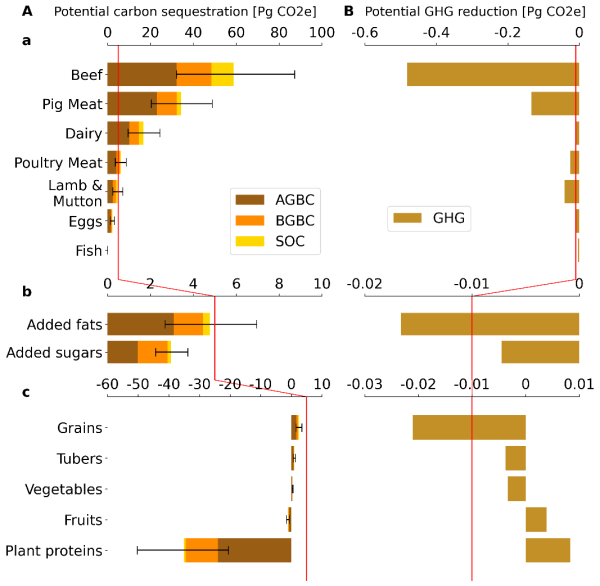
The global food system is responsible for around a quarter of total anthropogenic greenhouse gas emissions. In high-income countries, about 70 percent of those food-system emissions come from livestock, while only about 22 percent are from livestock in low- and middle-income nations.
Researchers from Leiden University, publishing in Nature Food, investigated how much land could be saved by 54 high-income nations moving to the EAT-Lancet diet that is good for both the planet and human health with a high proportion of plant-based foods. They followed the production of food within nations and the trade of food between nations to trace how dietary shifts in one country could lead to land saved both domestically and abroad. They found that rich nations could score a carbon “double dividend” by switching to healthier, plant-based diets. The researchers estimate that almost 100 billion tonnes of carbon dioxide could be pulled out of the atmosphere by the end of the century, equal to about 14 years of global agricultural greenhouse gas emissions, through a combination of lower livestock emissions and wild plants sequestering carbon as land reverts to its natural state. This would help to keep the planet from warming more than 1.5°C.

It is a remarkable opportunity for climate mitigation but would also greatly benefit biodiversity, public health, and more.
For more reporting on the work, see the BBC’s news article here.
Authors: Laura Scherer and Paul Behrens, Leiden University, The Netherlands; Zhongxiao Sun, China Agricultural University, China
Source: https://www.nature.com/articles/s43016-021-00431-5
Source of figure: https://www.nature.com/articles/s43016-021-00431-5

